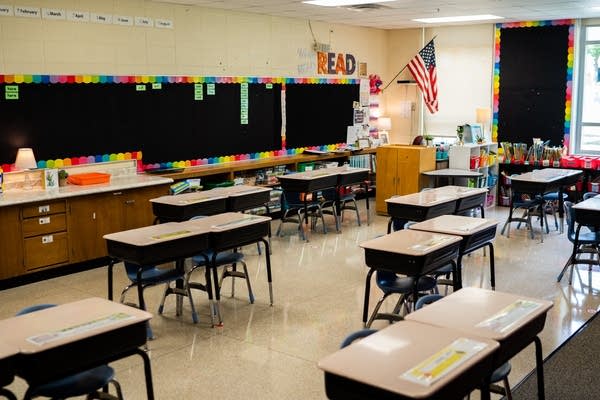More Minnesota schools halt in-person classes as COVID-19 cases rise

Desks in a classroom at Kennedy Elementary are set up in a way that students will be socially distanced when they come back to class in Hastings, Minn., on Sept. 1. As COVID-19 case rates continue to rise, Duluth, Bloomington and Hopkins public schools have announced plans to transition their students to distance learning.
Evan Frost | MPR News file
Go Deeper.
Create an account or log in to save stories.
Like this?
Thanks for liking this story! We have added it to a list of your favorite stories.


